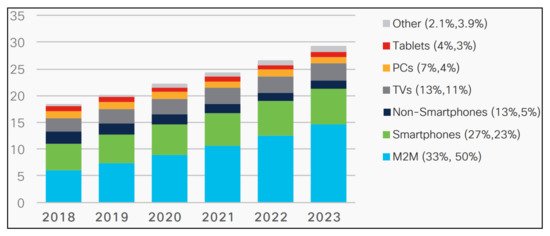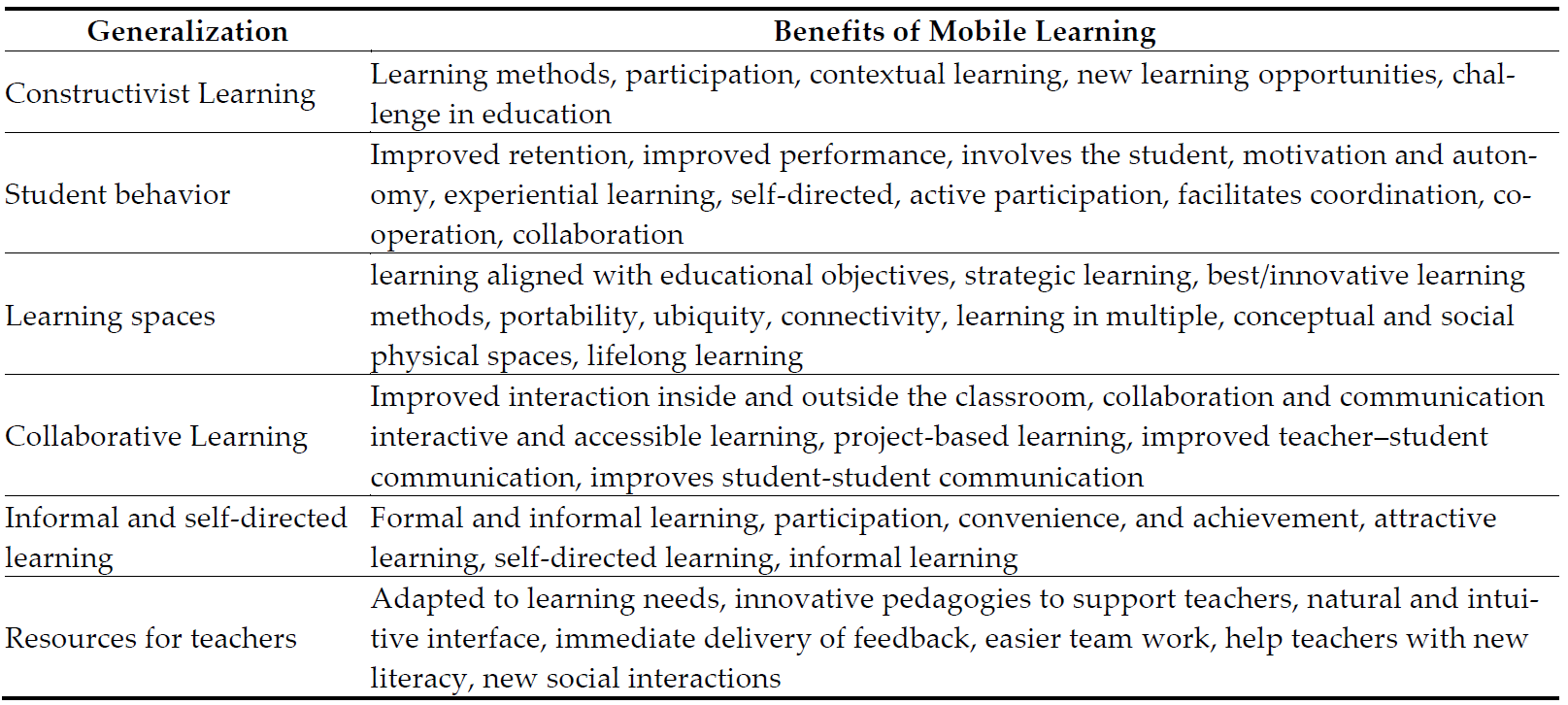Today's world demands more efficient learning models that allow students to play a more active role in their education. Technology is having an impact on how instruction is delivered and how information is found and shared. Mobile devices have become a complete set of applications, support and help for educational organizations.
- mobile learning
- learning
- education
- mobile education
- technologies
1. Introduction

2. Use of Mobile Devices in Education
3. Issues of using mobile learning in education

4. Benefits of using mobile learning in education

5. Conclusions
The general analysis of the research indicates students are predisposed to use their mobile devices in the teaching-learning process because they are familiar with their utilization. Moreover, the success of m-learning is highly dependent on the educational institution, the teachers involved, and the students. Due to the physical characteristics of mobile devices, technological limitations are one of the main issues this technology has for its use in the educational area.
This entry is adapted from the peer-reviewed paper 10.3390/app11094111
References
- Criollo-C, Santiago; Luján-Mora, Sergio; Jaramillo-Alcázar, Ángel; Advantages and disadvantages of m-learning in current education. Proceedings Appl. Sci. 2021, 11, x FOR PEER REVIEW 16 of 19 IEEE World Engineering Education Conference 2018, 0, 0, 10.1109/EDUNINE.2018.8450979.
- Annual Internet Report (2018 - 2023) . Cisco: Annual Internet Report. Retrieved 2021-5-7
- Kukulska-Hulme, A.; Pettit, J.; Bradley, L.; Carvalho, A.A.; Herrington, A.; Kennedy, D.M.; Walker, A. Mature Students Using Mobile Devices in Life and Learning. Int. J. Mob. Blended Learn. 2011, 3, 18–52.
- Sobral, S R; Mobile learning in higher education: A bibliometric review. International Journal of Interactive Mobile Technologies 2020, 14, 153-170, 10.3991/ijim.v14i11.13973.
- Sattler, B; Spyridakis, N; Ramey,J; The learning experience: A literature review of the role of mobile technology. IEEE Int. Prof. Commun 2010, 0, 38-45, 10.1109/IPCC.2010.5529811.
- Bucea-Manea-Tonis, R; Bucea-Manea-Tonis, R; Simion, V.E.; Ilic, D.; Braicu, C.; Manea, N; Sustainability in higher education: The relationship between work-life balance and XR e-learning facilities. Sustainability 2020, 12, 5872, 10.3390/su12145872.
- Sattler, B; Spyridakis, N; Ramey,J; The learning experience: A literature review of the role of mobile technology. IEEE Int. Prof. Commun 2010, 0, 38-45, 10.1109/IPCC.2010.5529811.
